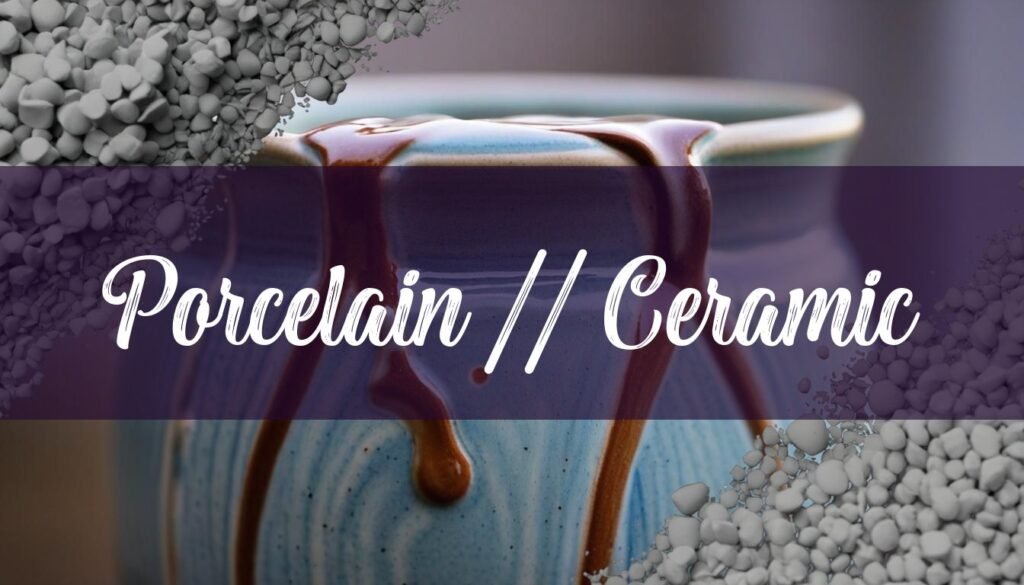When it comes to selecting materials for your home or commercial space, durability is paramount. Both porcelain and ceramic tiles are popular choices, but understanding their differences is key to making an informed decision. The central question is: what is more durable, porcelain or ceramic? Let’s delve into the factors that determine the resilience of each material, from their composition and manufacturing to their resistance to everyday wear and tear.
The Foundations: Composition and Manufacturing
The journey of a tile from raw material to finished product significantly influences its durability. Both porcelain and ceramic tiles begin with clay, but the type of clay and the firing process set them apart. Ceramic tile is typically made from natural red, brown, or white clay, while porcelain utilizes a more refined kaolin clay mixture. This kaolin mixture consists of the mineral kaolinite, water, and other secret ingredients that vary among manufacturers according to Lofty. The raw materials often include feldspar, clay, silica sand, and various additives, with recipes differing to achieve unique colors, textures, and characteristics as noted by MSI Surfaces. For those interested in exploring the origins of clay, learning about sourcing local clay can be quite enlightening.
The manufacturing process involves several key steps. Initially, water and raw materials are combined to create a sand-like consistency according to MSI Surfaces. A spray dryer then removes excess moisture, ensuring a well-balanced mixture according to MSI Surfaces. The mixtures are pressed into tile bodies, or “Greenware,” using specially designed punches according to MSI Surfaces. Before glazing and firing, the Greenware tiles are dried to eliminate moisture according to MSI Surfaces. A state-of-the-art inkjet printer applies the desired patterns and colors, followed by a protective glaze for either a glossy or matte finish according to MSI Surfaces. Finally, the tiles are fired in specialized kilns at high temperatures. Kiln care is an important factor in the overall quality of ceramics as well.
Ceramic is generally fired at temperatures ranging from 1,000 to 1,200 degrees Celsius as stated by IL-COM, while porcelain undergoes firing at even higher temperatures, reaching up to 1,400 degrees Celsius as stated by IL-COM. These elevated temperatures, ranging from 2300℉ to 2455℉ (1260℃ to 1345℃), remove any remaining moisture and enhance the tiles’ overall strength and quality according to MSI Surfaces. Porcelain’s higher firing temperature results in a denser, harder tile compared to ceramic according to MSI Surfaces.
Porosity: The Key to Water Resistance and Longevity
Porosity, or the ability to absorb water, is a critical factor in determining a tile’s durability according to Floor Trends Magazine. Porcelain tile is known for its low porosity, with a water absorption rate of less than 0.5% according to MSI Surfaces. This is why it is often classified as an impervious tile according to Floor Trends Magazine. Ceramic tile, on the other hand, has a slightly higher absorption rate according to MSI Surfaces, making it more suitable for indoor applications where moisture exposure is minimal according to MSI Surfaces.
The low porosity of porcelain tiles provides several benefits. It makes them ideal for high-moisture environments like bathroom floors, shower surrounds, and outdoor spaces such as patios according to The Tile Shop. Lower porosity enhances durability according to Fantaci, and while porcelain tiles are not completely non-porous, their minimal porosity is a testament to their quality according to Fantaci. Sealing porcelain tiles can further reduce their porosity, making them nearly impervious to liquids and ensuring extra protection according to Fantaci.
Conversely, unfinished ceramic tiles, like quarry tile, are generally more porous and less suitable for high-moisture areas and outdoor environments according to The Tile Shop. However, finished ceramic tiles are not porous, making them well-suited for bathrooms, showers, and other high-moisture areas according to The Tile Shop.
PEI Ratings: Measuring Wear Resistance
The Porcelain Enamel Institute (PEI) has developed a rating system to quantify the hardness and durability of ceramic and porcelain tiles according to The Spruce. This system measures the surface enamel’s resistance to abrasion according to The Spruce using a rotary abrasion resistance testing machine according to The Spruce. The PEI ratings range from 0 to 5, with higher numbers indicating greater wear resistance according to The Spruce. A PEI rating of 0 is suitable only for wall applications, while a rating of 5 is designed for heavy-duty floor traffic in both residential and commercial settings according to The Spruce.
Understanding PEI ratings helps determine the appropriate use of a tile in different applications according to Mosaic Tile. For instance, a PEI rating of 1 is suitable for wall use only in residential and commercial applications, such as shower surrounds according to The Spruce. A rating of 2 is appropriate for walls and light-duty floors, often used in residential bathrooms according to The Spruce. Tiles with a PEI rating of 3 are suitable for countertops, walls, and floors with normal foot traffic, making them a good general-purpose option for all residential uses according to The Spruce. For more details on decorating pottery, consider checking out this guide on how to paint on pottery.
Grade 4 tiles are ideal for all residential applications and light-duty commercial use, such as restaurants and offices according to MSI Surfaces. Grade 5 tiles, being the strongest and most durable, are commonly used in heavy commercial spaces like schools, hospitals, and shopping centers according to MSI Surfaces. While the PEI class is not the only factor to consider when choosing a tile, it provides valuable information about a tile’s wear resistance and suitability for different environments according to The Spruce.
In summary, while both porcelain and ceramic tiles offer durability, porcelain generally surpasses ceramic due to its denser composition, lower porosity, and higher PEI ratings. Porcelain’s resistance to water absorption and wear makes it an excellent choice for high-traffic and moisture-prone areas, ensuring longevity and maintaining its aesthetic appeal over time.





